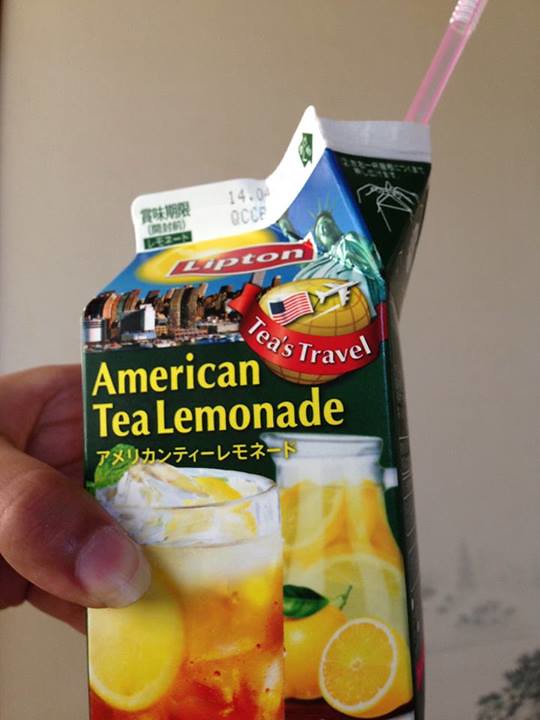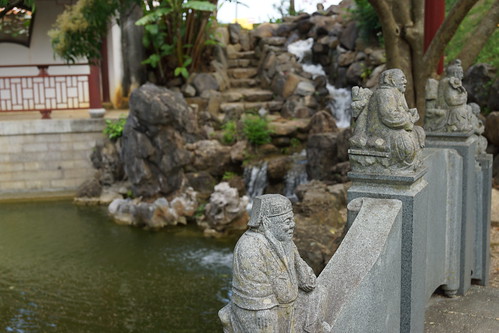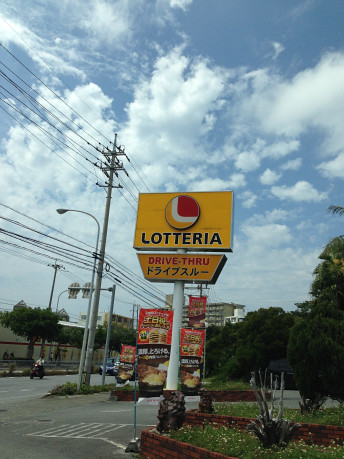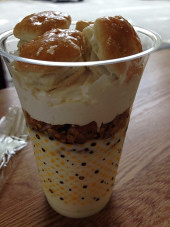Preventative medical care is incredibly important in the detection and early treatment of ailments. Few countries on the planet have a better grasp of this than the fine medical professionals of Japan. This is likely why each year people all over the country get a standard medical check-up or what we like to call a physical.
Unlike what most Americans are familiar with the standard medical check-up that the people in Japan receive is quite in depth and dare I even go so far as to say better. This in depth check-up include a long list of standard tests that include body measurements, ophthalmic exam, hearing test, lung function test, circularity organ test, urine test, fecal exam, hematological test, liver function test, pancreatic function test, sugar metabolism test, lipid test, immunological test, renal function test, gout test, chest X-ray, stomach X-ray and abdominal ultrasound. There is also a long list of optional tests that you can choose from. This includes but is not limited to gender specific tests such as prostate exam and mammograms.
Because the idea of getting your very first standard medical check-up in Japan can undoubtably be intimidating and at times confusing I have decided to outline all of the information you need to know in this post. We will cover everything that you need to know from the moment you make your appointment to the moment you get back home. The only thing that I ask of those reading this is to understand that information may vary slightly based on the medical facility that you visit. However the goal of this post is to provide you with the information you need in order to feel comfortable with the process.
Making Your Appointment
The process of making an appointment for your standard medical check-up will vary based on the company that you work for and the medical facility that you choose to attend. In some cases you will have the ability to simply call the medical facility’s reservation hotline whereas in others your company will take care of the reservation for you.
Upon making your reservation/appointment you will be given a list of standard test (listed above) and you will be asked whether or not you would like to receive any of the optional tests. Once you have informed the medical facility of your requests you will then be given a date and time for your appointment and a packet of information.
What is Included in the Medical Packet
A few days before your appointment you will receive a medical packet in the mail. This medical packet will include a pamphlets with information about your standard medical check-up, urine test kit and fecal test kit. Because the medical facility we used was aware that we were English speakers we received all of the information in English. However, there were some areas which were challenging to understand if you have no Japanese language ability. We will discuss all of that information later in this post.
What Information is Required By You
In your medical packet you will receive a number of forms that will need to be filled out. Much like any other medical examination you will provide information about yourself, medical history and concerns via checking boxes on the form. If you are a female you will be asked for information regarding your last menstrual cycle and any pregnancies (suspected or otherwise). You will also be asked to provide information about your family history including parents, grandparents and siblings. Again this is very simple and done by checking a box. Finally you will be asked to answer questions regarding your lifestyle such as whether or not you smoke and/or drink and how often.
Special Information Regarding Stomach X-ray
One of the standard tests performed is a stomach X-ray. This test requires the use of barium, a milky substance that is consumed at the time of the exam, which helps show the stomach lining. This test is used to find abnormalities in the stomach, esophagus and duodenum such as cancer, ulcers, polyps and so on. During this X-ray you will also be given a shot which stops the movement of the stomach allowing a clear X-ray image to be taken.
Although this process is based on the guidelines of the Japanese Society of Gastroenterological Cancer Screening there are some risks that the medical facility will want to make you aware of. This includes the potential of minor symptoms such as nausea, stomachache, constipation, diarrhea or pain in the stomach region. There is also the chance of fever or allergic reaction. Very rare cases also cause internal obstruction, perforation and appendicitis. Once you read through the release form and fully understand the information that has been provided to you then you will sign indicating that you would like to have this X-ray taken.
How to Collect Your Urine Sample
Collecting a urine sample with a Japanese urine sample kit is slightly different from what I think most Americans are familiar with. Rather than a small cup that can be urinated into directly you will receive a plastic disposable container, tube with a screw cap and single use dropper. After properly cleaning yourself to ensure that there is no contamination you will then urinate into the disposable container and then use the single use dropper to fill the tube with a screw cap.
*Urine sample should be collected the day of your exam in the morning immediately after you wake up.
How to Collect Your Fecal Sample 
Collecting a fecal sample isn’t quite as straight forward as collecting a urine sample. Your fecal sample kit will include three pieces all of which will come to you sealed; 2 rectangular tubes and 1 flushable/disposable “toilet” or “Toreru Paper” (トレールパーパ). When you are ready to collect your fecal sample put 3 or 4 layers of toilet paper on the surface of the water in your toilet bowl. Then place the “Toreru Paper” (トレールパーパ) over the top of it. Finally dedicate in the “Toreru Paper” (トレールパーパ).
Immediately after you will need to collect your sample. You do this with the small rectangular tubes. The first thing you need to do is twist and remove the cap. You will notice that the cap is attached to a small wand. The very tip of the wand is ribbed. This is the area that needs to be covered in fecal matter in order to have a proper sample. Carefully run the wand along the feces to collect your sample. Be careful not to collect to much as too much will result in the inability to be tested. Carefully insert the wand back into the remaining part of the tube and twist the cap to lock. Store this in a cool dark place until the time of your appointment.
Finally write all of the necessary information on the tube. You will need to put your name (名前), whether you are a man (男) or woman (女), and then the date which is the year (年) month (月) and day (日 ).
*Do not use a gel pen when writing your information. It will smudge.
The Night Before and the Morning Of Your Check-Up
Now that you have filled out all of the necessary forms and collected all of the necessary samples it’s time to consider what need to be done before your exam. The day before your check-up you will be asked to ear a light dinner and ensure that you have finished eating my 9:00PM with no drinking after 10:00PM. You will be asked not to consume alcohol the day before your check-up.
On the morning of your exam you are asked to continue fasting and do not eat breakfast, snacks or drink any water/tea. You will also be asked to refrain from smoking the morning of the exam. Those who take medications in the morning are also asked to ensure that they take them with only the smallest amount of water necessary proper to 6:30AM.
Other Important Information
Women who are menstruating cannot have certain exams performed. If you happen to be menstruating during the time of your scheduled exam you may want to reschedule. Women who are pregnant, may be pregnant or are receiving fertility treatments are required to speak with their doctor prior to this check-up as it is not possible to have an X-ray taken.
Those taking medication should speak with their doctor prior to scheduling a check-up and ask whether or not the check-up is possible and safe. Any medications you are taking should be brought with you to your appointment.
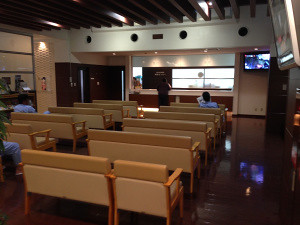
Now that you have an understanding of what is required before your standard medical check-up it’s time to talk about what to expect when you arrive at the medical facility. Like most other things in Japan medical facilities are held to high standards. You will find that they not only offer quality but also comfort for the guests. This is refreshing especially for someone like myself who is not very fond of medical facilities in general.
Once checking in for your appointment you will give the attendant all of the paperwork that you filled out in your medical packet and samples as well as your insurance card. At this particular you did not receive your insurance card back until the end of the appointment. This may vary from medical facility to medical facility. At this time you will also select one of two lunch options which will be made available to you free of charge (this is part of the standard medical check-up package). You will then have to sign your name down next to a number. This number is how you will be referred to during your exam.
Once you have completed the check in process you will be directed to a locker room. The locker room is where you will change out of your street clothes and store your belongings. Each locker, which includes a key so that you can ensure your belongings are safe, is numbered and has a size on the outside. This size refers to the garnets that are inside. After choosing a locker with the appropriate size change into your top, bottoms and slippers. You can leave undergarments on however it’s probably a good idea for women to be cautious about the bras (because of metal clasps and underwires). A sports bra or light support garment may be a better choice than a your regular bra.
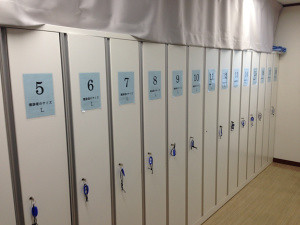
After changing you will then return to the waiting room and wait to be called to the reception desk. You will then be handed a folder with all of your information inside which you will take with you while the tests are being completed.
When the testing begins you, as well as a small group of other guests, will be guided to a series of rooms. Each room is numbered with the number indicating a certain test that is part of the check-up. A coordinator will direct you to the appropriate room so that you and everyone else can efficiently complete the required tests.
Most of the tests are pretty straight forward with the most challenging being the stomach X-ray. Before beginning this particular exam you will be given barium which is a cider powder coupled with a liquid that tastes like watered down chalk. During this exam you will be required to consume the liquid on command as prompted by the technician. At first you will take some slow sips and finally finish when told. Then, like some type of carnival ride, the platform you are standing on will begin to rotate while you hold yourself in place with two wars and a shoulder restraint. This will allow the technician to take detailed images of your stomach. Once you have completed this exam you will be given a laxative and a series of instructions. Because barium is not digested by the body it needs to be passed so that there are no complications. Couple this laxative with some healthy veggies and lots of water and you will have no problems.
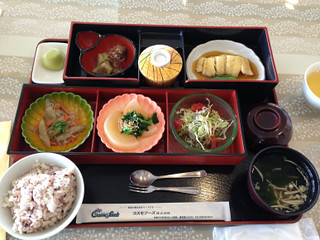
Once all of the tests have been completed you will then return to the reception desk and inform then that you have completed the tests. They will then direct you to return to the locker room and change before proceeding to where your lunch will be served.
This particular lunch was fish with mushroom miso and a daikon salad. There was also whole grain oats and rice, sesame salad, pickled egg plant, custard and mochi for desert. The lunch came with a detailed description of everything that you were eating as well as a calorie count. This meal was only 660kcal. Unlike what you would expect from hospital food this meal was absolutely delicious. The ingredients were fresh, prepared well and could have easily been from a typical Japanese restaurant.
Finally after lunch it was time to return to the floor where the testing took place and have a consultation with a doctor. At this time the tests were gone over in basic, easy to understand, terms. You will also be informed that a detailed packet or results and other information will be sent to your home within the next 30 days.
Although it can be intimidating to do anything medical related in a place where your native language is not the one that the medical professionals are speaking this medical facility did a great job ensuring English speaking foreigners were in the loop and aware of what was happening. Although none of the technicians or doctor spoke more than basic conversational English they were capable of explaining information about the tests being given and the results.
Overall the experience was a pleasant one, despite the very unpleasant associations that many people have when they hear “doctor”. Each one of the technicians and members of the staff were friendly, helpful and willing to go above and beyond to ensure you know what to do next. Most important to me is that the whole experience is comfortable.
Have you ever had a standard medical check-up in Japan? Share your experiences in the comments below.




